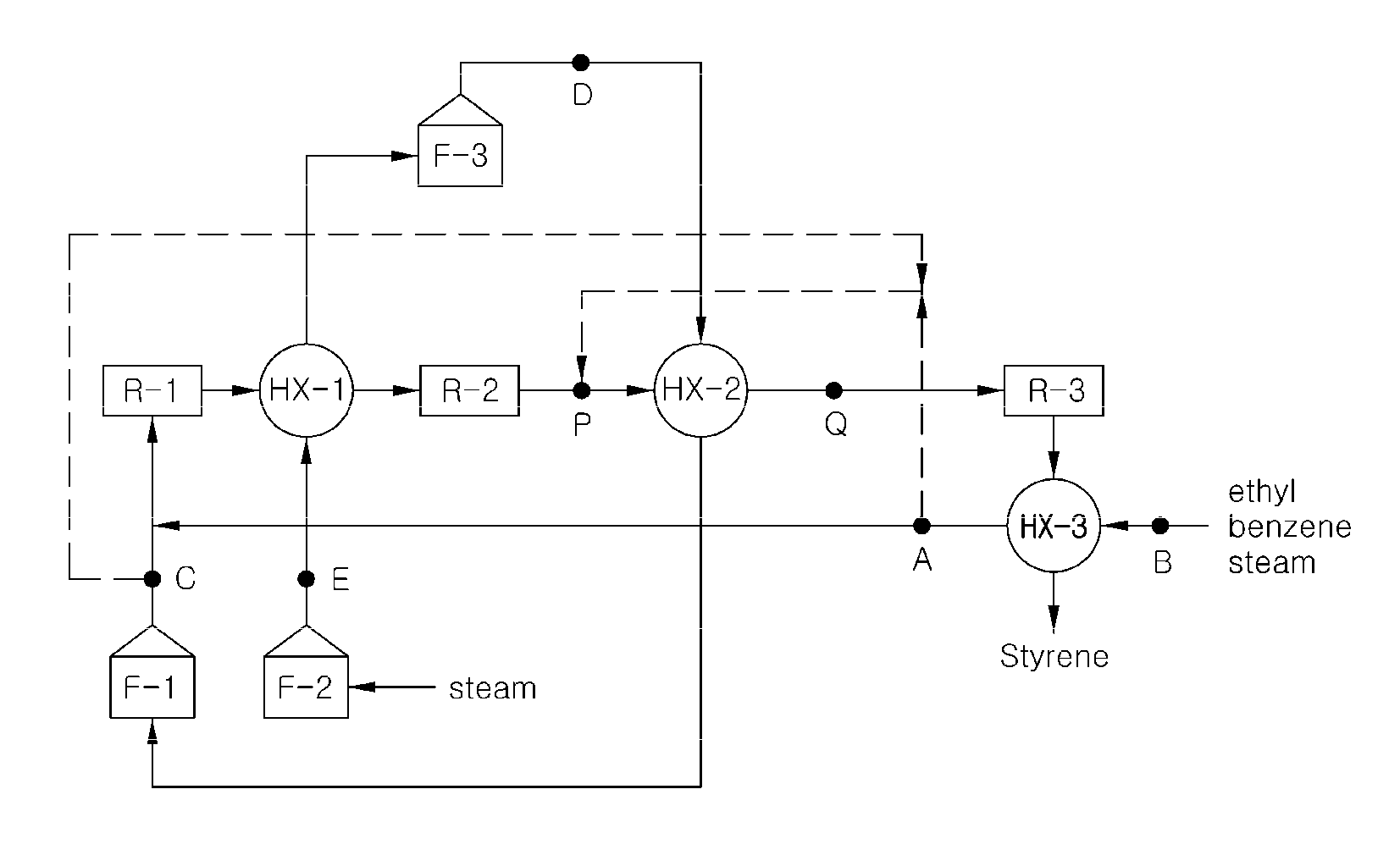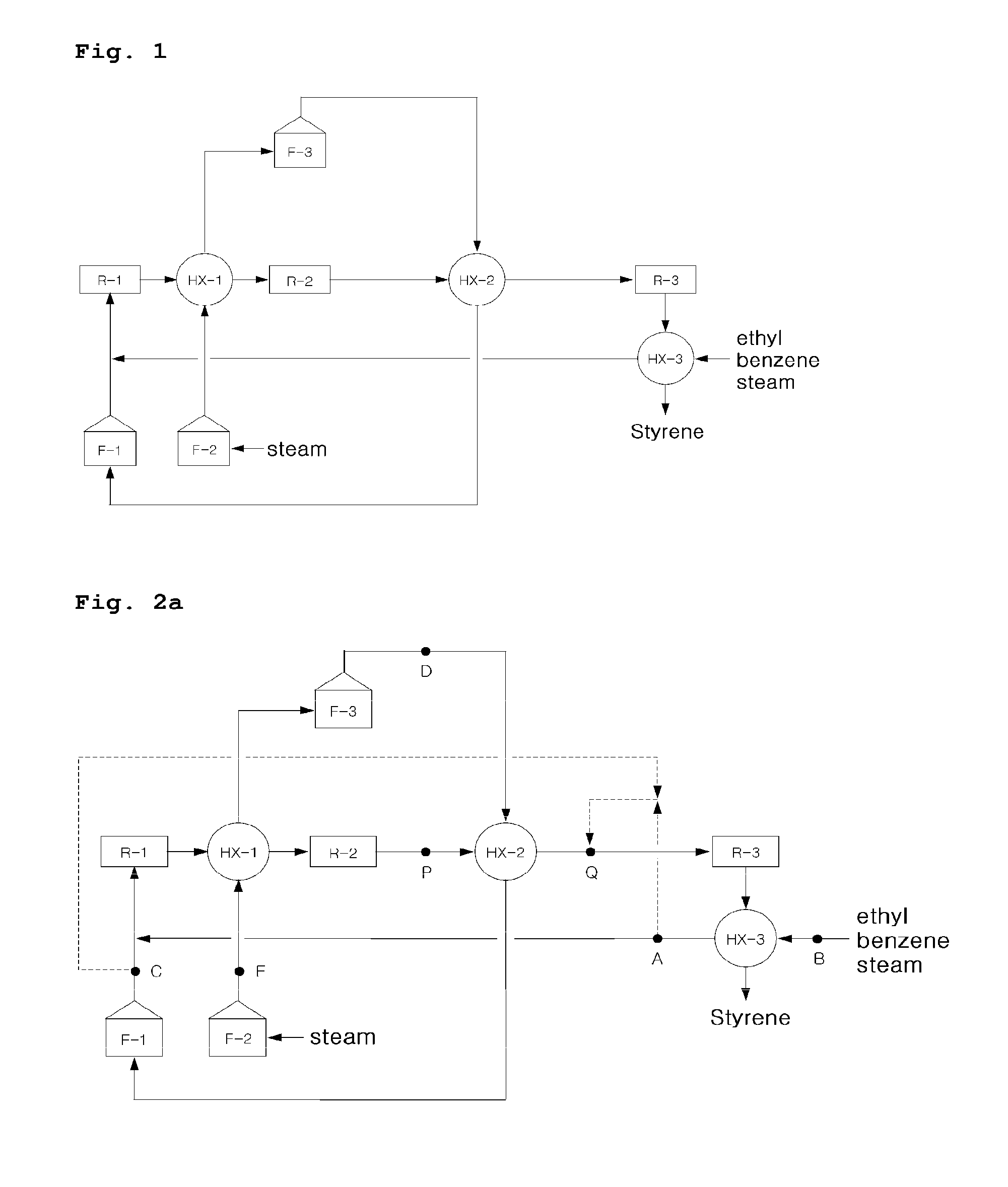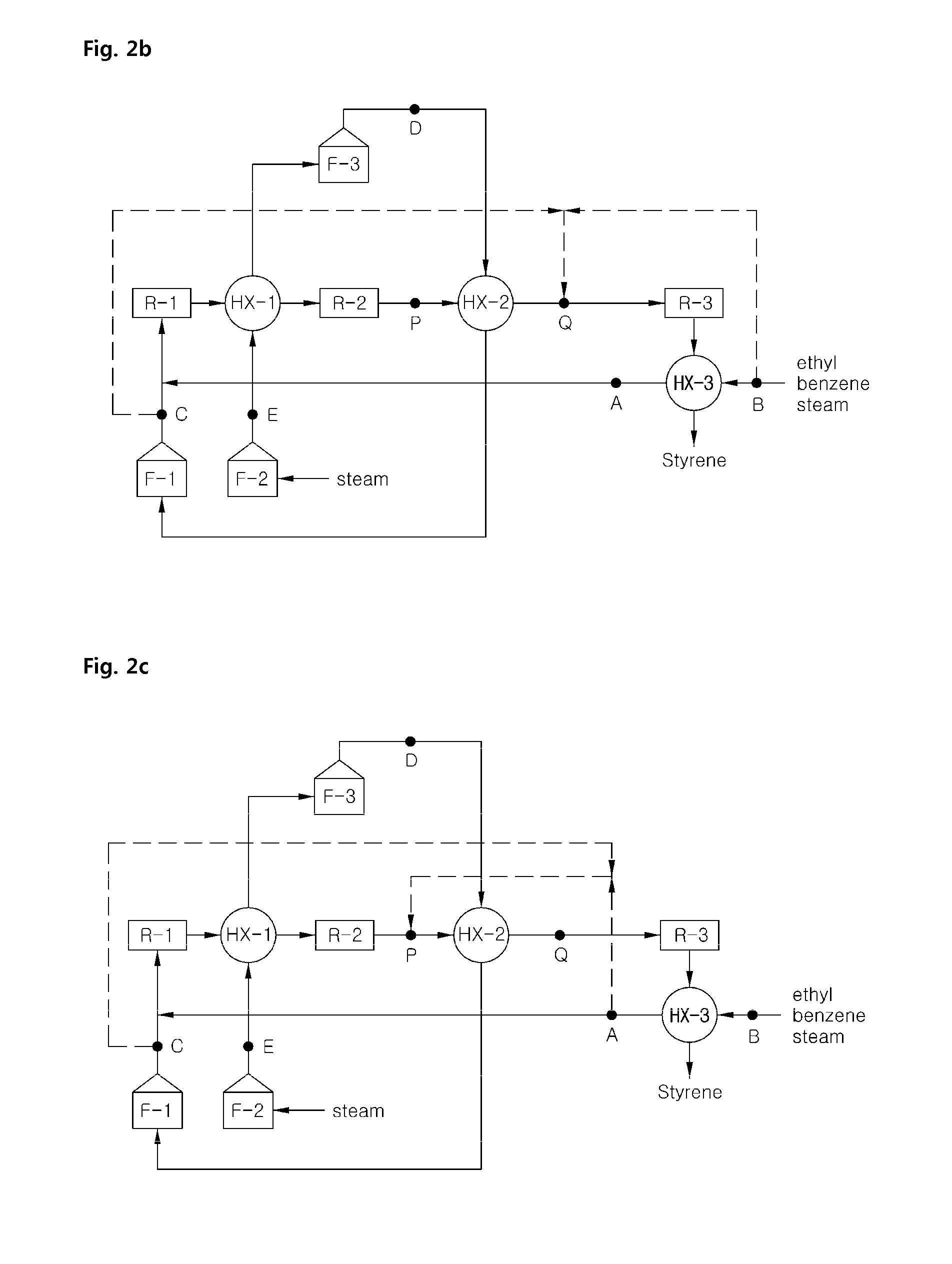Method for improving productivity and process stability in styrene manufacturing system having multiple reactors connected in series
a technology of styrene manufacturing system and reactor, which is applied in the direction of hydrocarbon by hydrocarbon cracking, chemistry apparatus and processes, organic chemistry, etc., can solve the problem of reducing the selectivity of styrene, the inability to reconstruct the shape of the reactor, and the loss of heat corresponding to latent heat when steam is condensed to water. problems, to achieve the effect of reducing the linear velocity of fluid, reducing the amount of water
- Summary
- Abstract
- Description
- Claims
- Application Information
AI Technical Summary
Benefits of technology
Problems solved by technology
Method used
Image
Examples
experiment example 1
Divergence of the Feed and Ultrahigh Temperature Steam
[0049]The feed containing ethylbenzene and steam diverged at the point A and the amount thereof was 17.0 vol % of the total amount of the feed being fed. The ultrahigh temperature steam was possible to diverge at the point C, D or E as shown in FIGS. 2a-2b, with the amount of 17.0 vol %.
[0050]The divergence at the point C is considered to be most advantageous in theory, since the point C directly affects HPT of F-1 with same degree of effect, although the point D directly affects HPT of F-1 and F-3, and the point E directly affects HPT of F-1, F-2 and F-3. In the above, the ‘directly affects’ means reduction in heat supply or heat exchange capability due to reduction in the feed amount caused by the divergence. Such reduced capability results in direct increase in HPT. The tendency and the degree of temperature change was estimated and compared through simulation.
[0051]The case 1 in which only ultrahigh temperature steam diverged...
experiment example 2
Injection of the Diverged Amount of the Feed and Ultrahigh Temperature Steam
[0054]The point P or point Q in FIGS. 2a-2e is the point for possibly injecting the ultrahigh temperature steam, and the raw materials, i.e. ethylbenzene and steam diverged.
[0055]It is difficult to determine which point between the point P and point Q is more advantageous, theoretically. For selecting the more preferred injection point, the different effects of the injection point P and point Q on HPT of F-1, F-2 and F-3 (i.e., by the equation of (HPT at the position P-HPT at the position Q)) were simulated and compared, with a given divergence point of the point C for ultrahigh temperature steam. The results were summarized in the following Table 2.
[0056]
TABLE 2FurnaceF-1F-2F-3(HPT at the position P - HPT0.00.04.0at the position Q) ° C.
[0057]From the results of Table 2, although the injection point of the point P or point Q only had small influence on HPT of F-3, the point Q was more preferred.
[0058]However...
PUM
| Property | Measurement | Unit |
|---|---|---|
| temperature | aaaaa | aaaaa |
| vol % | aaaaa | aaaaa |
| temperature | aaaaa | aaaaa |
Abstract
Description
Claims
Application Information
 Login to View More
Login to View More - R&D
- Intellectual Property
- Life Sciences
- Materials
- Tech Scout
- Unparalleled Data Quality
- Higher Quality Content
- 60% Fewer Hallucinations
Browse by: Latest US Patents, China's latest patents, Technical Efficacy Thesaurus, Application Domain, Technology Topic, Popular Technical Reports.
© 2025 PatSnap. All rights reserved.Legal|Privacy policy|Modern Slavery Act Transparency Statement|Sitemap|About US| Contact US: help@patsnap.com



